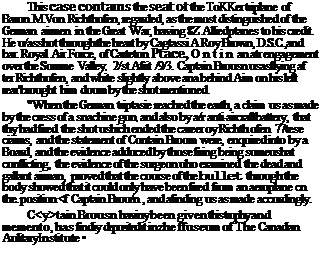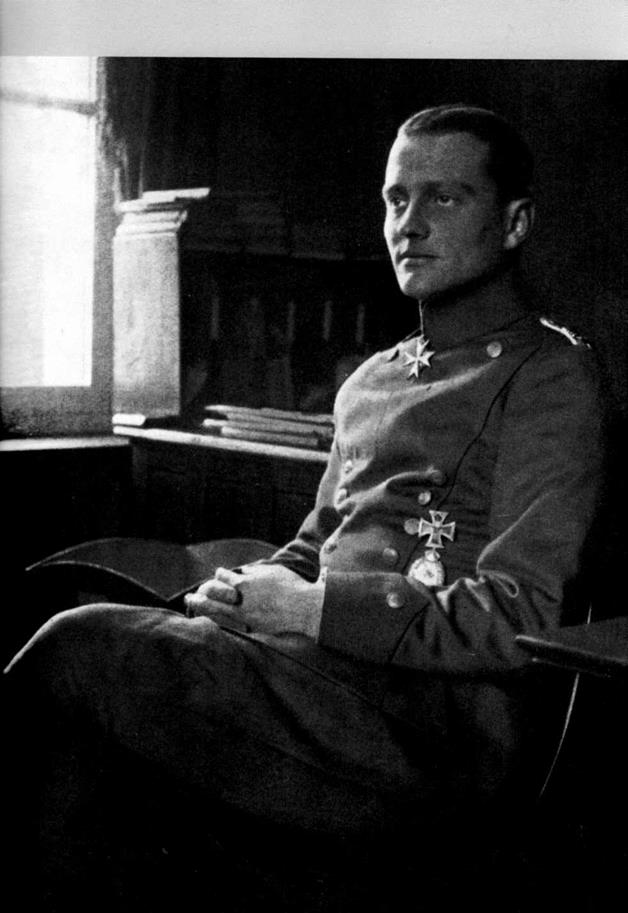FOREWORD

![]()
This framed plaque was displayed in 1920 at the Canadian Military Institute (now the Royal CM I) in Toronto, Canada on the occasion that Captain Roy Brown ceremonially inaugurated an exhibition which included his personal trophies from Fokker Dr. I 425/17.
This was the aircraft in which Rittmeister Manfred Freiherr von Richthofen met his death on 21 April 1918 over the Somme Valley. The principal item exhibited was the aluminium seat from the Barons Triplane.
On 10 November 1977, the Librarian and Curator of the Institute, Lieutenant – Colonel W G Heard, in reply to an enquiry from Captain Frank McGuire, a historian at the Canadian War Museum in Ottawa, exlained the origin of the plaque exactly as follows:
77ie caption Ithat/ yon hair, was used when A R Brown donated the ‘seat’ to the R. C.Xt. l.
It in turn was taken from an Ontario Board of Education grade H History of Canada textbook published by Coppe, Clarke and Company. Hie caption was dictated by Roy Brown.
The clear and concise description of the position of Captain Browns own Sopwith Camel aeroplane given on the plaque was confirmed in Browns own statements during interviews when he visited various cities and towns throughout Canada on business in the 1920s. His words were reported in the local newspapers and are to be found later in this work.
The altitude and the map location at which the engagement took place are also described later, using information provided by Captain Brown and by some of the very few people who actually
saw where this happened.
The total number of Allied aircraft officially credited to the Baron by the German High Command is now known to be 80, not the 82 as recorded on the plaque. Additional information on the composition of the ‘board* is to be found in this book and appendices.
The Plaque is currently (1997) on display in the private museum of the Royal Canadian Military Institute in Toronto.
The authors will have cause to return to the wording of this plaque during their analysis of events.
|
|
![]()











